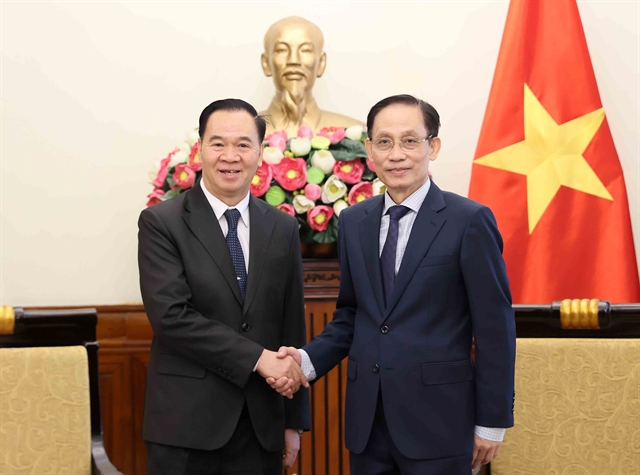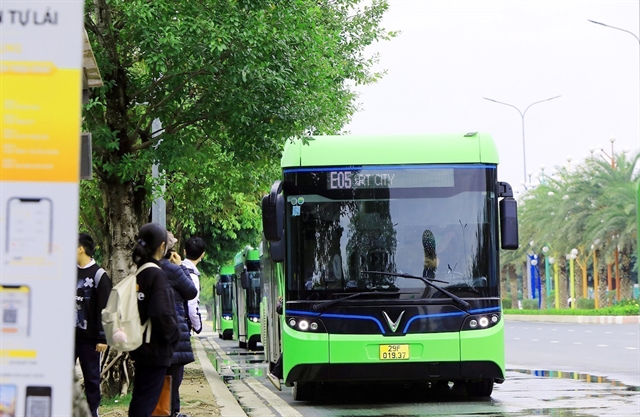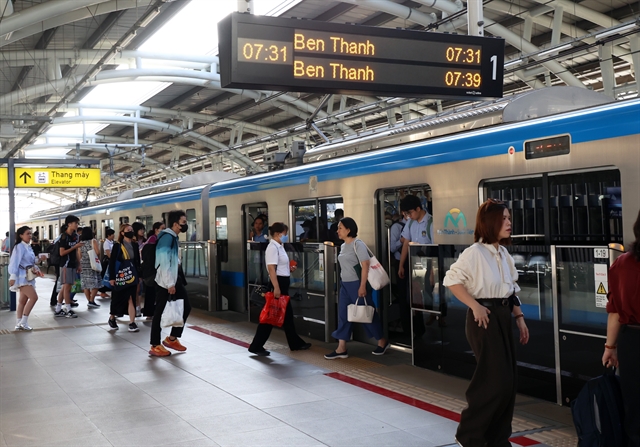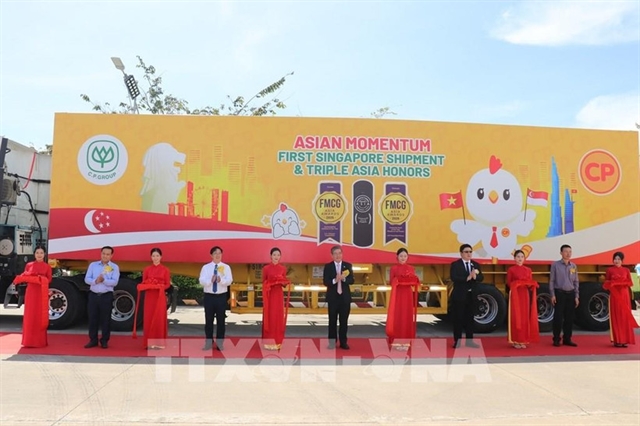 Society
Society


|
| A VinFast electrict bus in Hà Nội. — VNA/VNS Photos |
HÀ NỘI — As Việt Nam accelerates its digital transformation, the introduction of a smart ticketing system is no longer a mere technical upgrade but part of a national strategy to modernise public transport.
Speaking at a recent workshop titled 'Smart payment solutions for modern transport', Đỗ Việt Hải, Deputy Director of the Hà Nội Department of Construction, said the capital had long identified the need for an integrated smart ticketing system to meet real-world demands and support the Government’s push for a cashless economy in public transit.
Hà Nội is set to officially launch the inter-connected e-ticketing platform on September 2. The system will be delivered through an outsourced IT service and will be compatible with banking cards, e-wallets and even citizen ID cards, thanks to its application of VCCS, a domestic chip card security standard developed with support from the National Payment Corporation of Việt Nam (NAPAS).
Hải said the new system is expected to streamline fare payments and could potentially be expanded to include services like automatic toll collection, parking, and other future transport options.
Hà Nội aims to become a model for smart city development. However, two major challenges remain, including changing user habits, particularly among the elderly, and finding alternative employment for around 4,000 bus ticket vendors who currently work manually.
In HCM City, Metro Line 1 has already adopted a cashless payment model with cooperation from international financial players such as Visa and Mastercard, alongside NAPAS.
Nguyễn Hoàng Long, Deputy General Director of NAPAS, said the company had completed the technical groundwork to integrate automatic fare collection into urban rail systems.
He noted it took just 20 days to connect with the metro system once agreements were in place, thanks to strong coordination and ready-made standards.
Passengers can now use domestic and international bank cards to ride without needing separate transport cards, with successful trials already carried out on VinFast bus services and at airports.

|
| Passengers at metro line 1’s Thảo Điền Station in Thủ Đức City. |
Also speaking at the workshop, Satoru Horiuchi, General Director of Tokyo Metro Việt Nam, said that Japan had initially operated its railway lines independently. However, from 2000 onwards, the country began harmonising ticketing systems and, by 2013, had made IC cards like Suica and Pasmo usable across the country, not only for transport but also for daily purchases.
He recommended Việt Nam establish a centralised body to guide standardisation and ensure consistency in data, technology, and policy across all stakeholders.
Fukuda Chihiro, Deputy Chief Representative of the Japan International Cooperation Agency (JICA) in Việt Nam, said JICA had been supporting urban rail projects across Southeast Asia, including in Thailand, the Philippines, Indonesia and Bangladesh.
In Việt Nam, the AFC system has already been introduced as part of the metro project in HCM City.
He outlined three government priorities for AFC success, including interoperability with other services, data privacy protections and financial support.
He also encouraged Hà Nội to emulate HCM City's efforts in improving bus connectivity with metro stations to enhance convenience for commuters.
Khuất Việt Hùng, Chairman of Metro Hà Nội’s Board of Directors, called for clearer delineation between state and enterprise responsibilities.
Firms should manage their systems, while the Government focuses on coordination, policy and data management, he said.
“The platforms are ready, the tools are all there. What matters now is implementation,” Hùng said.
According to Hải, beyond payment, the smart ticketing system holds immense potential as a “data mine”.
“This is not just a fare collection tool. It is a comprehensive data collection system,” he said.
“While natural resources are dwindling, digital resources continue to grow. We must decide now how to use this digital wealth not only for public transport but across economic and social sectors. That is the real long-term goal.” — VNS




